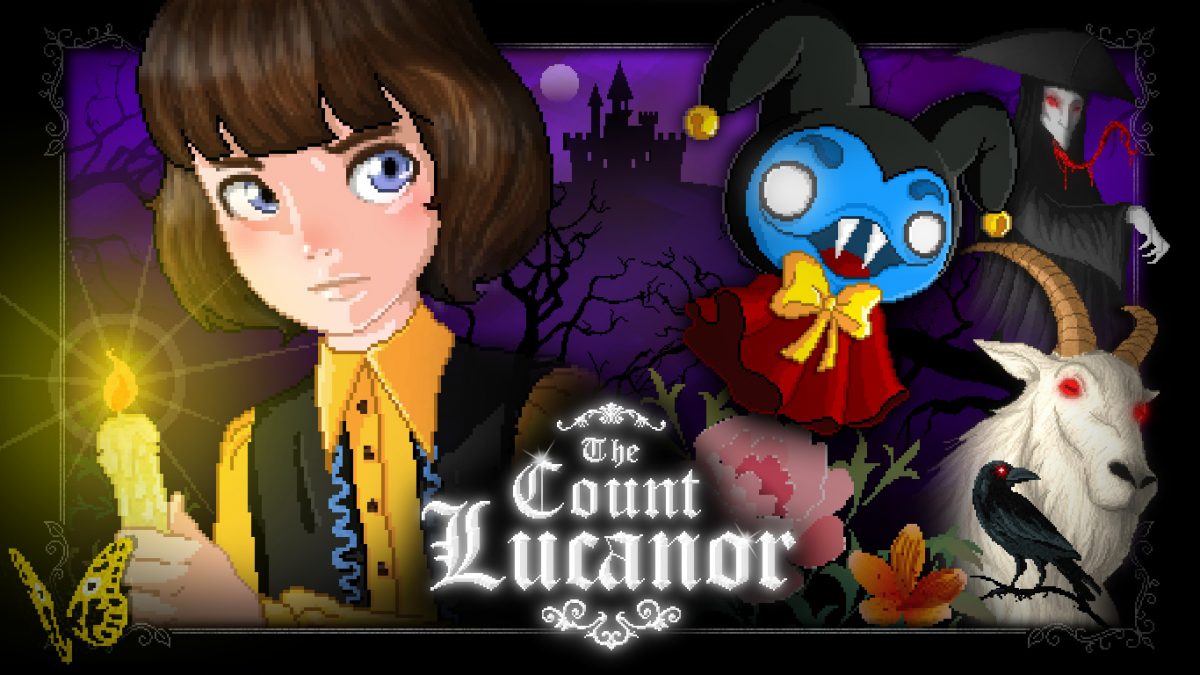Over the years there have been many survival horror games that have evolved and changed the genre. Resident Evil went from a survival puzzle horror game to first person action. Silent Hill went from exploration horror to being canceled by Konami. These two games are arguably the most important in the genre, but their legacies and influences are wide. With The Count Lucanor, developers Baroque Decay take us all the way back to 1999 and sit us down for a classic horror experience.
In Count Lucanor is a top down horror adventure game with minimalistic pixel graphics where you control Hans, a little boy who has just turned ten. His father is off to war and he wants nothing more than to be a big boy and go on an adventure, without his Mom of course. As Hans wanders outside he meets people who ask for his help, and he can choose to deny or help them. Situational choice is a huge component of the game; your actions really affect the way the characters treat you later on, and will lead to one of the six endings depending on what you’ve said or done. One thing leads to another and the world is turned into a hellish landscape, complete with walking goats, pentagrams, pig men and a giant castle. A strange blue Kobold invites Hans into the castle telling him that if he can figure out his true name, he will bestow riches to the young boy.

Within the halls of the castle are a cast of characters, many of which were encountered on the road up to it. The giant castle’s interior has different colored doors that block the way forward. As you progress, the characters reveal ways to enter into the rooms, like finding colored keys or solving puzzles. Each of these rooms are puzzles themselves and if you complete one you get a letter of the Kobolds name. Within the castle are ghouls and monsters stalking you, and this is where the game’s unique survival aspect comes into play. There’s no combat, at all. You’re forced to use your wits to avoid these horrifying creatures any way possible. Hans is young and unskilled, and in no way a force, so he must endure rather than fight. One might see you and try to suck your soul out — do you run into a room? Do you hide under a table? It can lead to harrowing situations. One of the biggest reasons Count Lucanor feels so sparse and dire is that there is little in the way of items to be found throughout the castle. There are coins here and there, which is used to save, and food to heal, but besides that the only items that are stumbled upon are the ones that help complete the puzzles.

The Count Lucanor feels like a traditional horror experience: the character is slow and meandering, the controls are a bit off but somehow also kind of right, and it’s not too long. Sometimes the game’s performance would drop frames to a point of it being VERY slow, though this only happened in the beginning area of the game and was more noticeable with the Switch docked. The story is passable, but isn’t something that ever hooked me. In fact, most aspects of it, aesthetics and gameplay aside, are quiet unremarkable. It literally feels like a game that could have come out on the Dreamcast around the time of Silent Hill or classic Resident Evil, which is perhaps what the developers were aiming for. Do I regret my time with the it? Not at all. I just never felt a pull to get back to it after my initial impression. Eventually I did sit down and play through the game twice, getting both good and bad endings. If you want a nostalgic horror experience on Switch, The Count Lucanor is absolutely fine, but if you have a PS4 or something else and want to play the genre, stick to the classics.
This review is based on a Switch eShop code sent to SideQuesting by the publisher.


No Comments